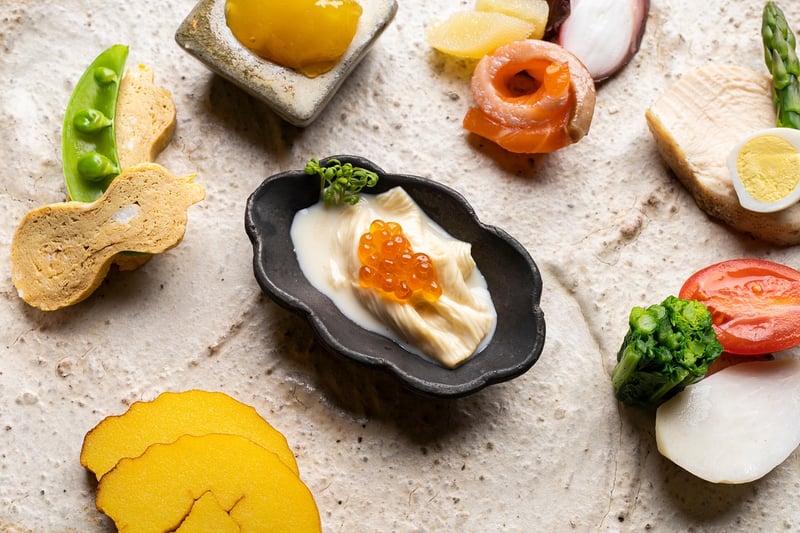Futuristic Delicacies

Culinary Experiences Across Time + Futuristic Delicacies
The Evolution of Culinary Delights
Food has always been an integral part of human culture and history. Throughout time, various civilizations have developed unique culinary traditions that reflect their values, beliefs, and resources. From the ancient Egyptians' use of spices to the elaborate feasts of the Roman Empire, the evolution of culinary experiences has been a fascinating journey.
Medieval Banquets and Renaissance Feasts
During the medieval period, banquets were extravagant displays of wealth and power, featuring an array of meats, fruits, and spices. The Renaissance saw a shift towards more refined and artistic presentations, with dishes like sculpted marzipan and intricately decorated pastries becoming popular.
The Rise of Global Cuisine
Exploration and trade in the Age of Discovery brought exotic ingredients like spices, chocolate, and tomatoes to different parts of the world, leading to the fusion of culinary traditions and the birth of global cuisine. Today, we can enjoy a diverse range of flavors and dishes from every corner of the globe.
Exploring Futuristic Delicacies
As we look towards the future, the world of food continues to evolve. Chefs and food scientists are experimenting with cutting-edge techniques and technologies to create futuristic delicacies that push the boundaries of taste and imagination.
1. In Vitro Meat
Lab-grown meat, also known as in vitro meat, is a sustainable alternative to traditional animal farming. By growing meat from animal cells in a lab setting, scientists aim to reduce the environmental impact of meat production while providing a cruelty-free protein source.
2. 3D-Printed Food
Imagine being able to design and print your food using a 3D printer. This futuristic technology allows for precise control over the ingredients, textures, and shapes of dishes, opening up a world of creative possibilities in the culinary realm.
3. Vertical Farming
Vertical farming involves growing crops in vertically stacked layers, using artificial light and controlled environments. This innovative approach to agriculture enables year-round production of fresh produce in urban areas, reducing the need for long-distance transportation and pesticides.
Embracing the Past and Future of Food
From ancient recipes passed down through generations to cutting-edge culinary creations, the world of food offers a rich tapestry of flavors, textures, and stories. By exploring culinary experiences across time and embracing futuristic delicacies, we can appreciate the diversity and creativity that make food a truly universal language.
Images Source: Pixabay